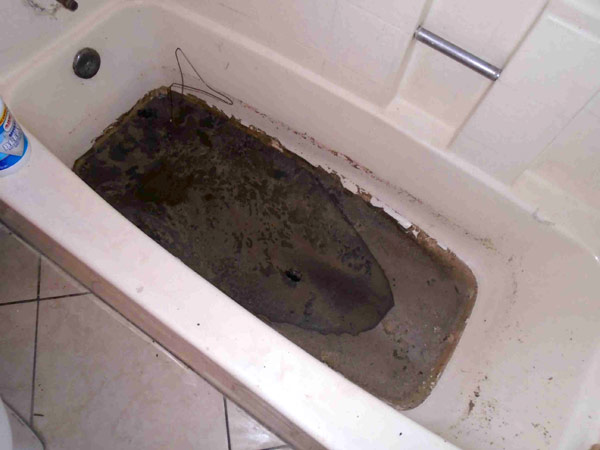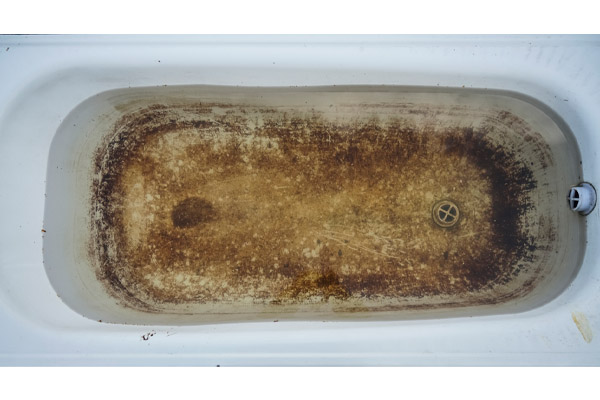Understanding Why Sewage Comes Up Through the Bathtub
Understanding Why Sewage Comes Up Through the Bathtub
Blog Article
Everybody may have their own unique opinion involving Water Coming up Bathtub Drain.

Sewage backup in the bathtub can be a distressing and unhygienic issue for any type of home owner. Not just is it inconvenient, yet it likewise presents major health and wellness risks and shows underlying problems with the plumbing system. Comprehending why sewage is coming up via the bathtub is crucial for taking appropriate action to deal with the trouble successfully.
Introduction to the Problem
Understanding the Issue
When sewer draws back up into the tub, it's a clear indication of a problem with the water drainage system. The wastewater that must be streaming far from your home is instead discovering its back right into your space, which can cause considerable damage and carcinogen.
Potential Causes
Several factors can contribute to sewer backup in the bathtub. From obstructions in the sewage system line to issues with the plumbing infrastructure, recognizing the source is essential for discovering a service.
Common Reasons for Sewer Back-up
Obstructions in the Sewage System Line
One of the most usual root causes of sewer back-up is a clog in the drain line. This can happen due to the buildup of particles, oil, or foreign items in the pipes, stopping proper circulation and causing sewage to support right into your tub.
Tree Root Breach
Tree origins seeking moisture and nutrients can penetrate sewage system lines with small cracks or joints. In time, these roots can grow and broaden, causing significant damage to the pipes and resulting in sewer backup concerns.
Aging Facilities
Older homes might have outdated plumbing systems that are much more prone to deterioration, splits, and deterioration. As pipelines age, they become more prone to leakages and obstructions, increasing the chance of sewage back-up events.
Heavy Rainfall or Flooding
During durations of heavy rainfall or flooding, the drain system might come to be overwhelmed with excess water, creating back-ups and overflows. This can result in sewage supporting right into bath tubs and other components inside the home.
Health Risks Associated with Sewage Back-up
Contamination of Water System
Sewage backup can contaminate the water system in your house, posturing a significant health danger to you and your family. Direct exposure to contaminated water can result in intestinal concerns, skin infections, and various other ailments.
Spread of Condition
Sewer contains dangerous germs, viruses, and parasites that can trigger a variety of diseases, consisting of liver disease, cholera, and gastroenteritis. Entering contact with sewage or polluted surface areas places you at risk of infection.
Mold and mildew Development
Wetness from sewer backup can develop perfect problems for mold and mildew development in your home. Mold spores can intensify breathing issues and create allergies in sensitive individuals, making timely cleaning vital.
Indications of Sewage Backup
Foul Odors
Unpleasant odors rising from drains or components, particularly in the bathroom, may suggest sewer backup concerns. These odors are frequently solid and relentless, signifying a trouble that calls for instant focus.
Slow Draining Fixtures
Tubs, sinks, and toilets that drain gradually or otherwise in all could be experiencing sewage backup. If numerous fixtures are affected concurrently, it's likely that the concern originates from a typical factor, such as the major sewage system line.
Gurgling Noises
Weird gurgling or gurgling noises coming from drains pipes when water is running somewhere else in your home are a measure of air trapped in the plumbing system. This air buildup can arise from sewer backup and should be examined quickly.
Immediate Actions to Take
Turning Off Water
In case of sewer backup, it's necessary to switch off the supply of water to prevent more contamination and damage. Find the primary water shutoff valve in your home and closed it off till the problem can be fixed.
Speaking To an Expert Plumber
Managing sewer backup is not a DIY job. Contact a qualified plumber with experience in taking care of sewage-related issues to examine the circumstance and carry out needed fixings or cleanings.
Avoiding Contact with Infected Water
Up until the sewer backup is dealt with, stay clear of contact with polluted water to avoid the spread of microorganisms and pathogens. Wear protective equipment if you need to remain in the damaged area and wash your hands extensively afterward.
Safety nets
Routine Maintenance of Sewage System Lines
Arrange routine evaluations and maintenance of your sewer lines to determine and address potential problems before they escalate into major troubles. This can include cleaning particles, inspecting for tree root breach, and repairing any kind of damaged pipes.
Mounting Backwater Shutoffs
Think about mounting backwater valves in your plumbing system to prevent sewage from flowing back right into your home throughout durations of heavy rainfall or flooding. These shutoffs automatically close when water draws back up, protecting your building from contamination.
Appropriate Disposal of Family Waste
Avoid flushing anything aside from toilet tissue and human waste down the toilet to avoid obstructions and clogs in the drain line. Dispose of grease, oil, and various other family chemicals correctly to minimize the danger of plumbing troubles.
Cleaning Up After Sewer Backup
Sanitation Procedures
Thoroughly decontaminate and sanitize affected areas after sewer backup to eliminate harmful bacteria and protect against mold and mildew development. Use proper cleansing items and protective gear to make sure safe and efficient cleanup.
Restoration of Influenced Locations
Fix any damages to floor covering, wall surfaces, or components caused by sewage backup. Depending upon the level of the damages, you might require to change carpeting, drywall, or various other products to restore your home to its pre-loss condition.
Why is Sewage Coming Up Through Your Bathtub?
Reasons You May Have Sewage in Your Bathtub
All the drains in your home lead down different pipes to get to the main sewer line. If you’re seeing sewage in the bathtub, the problem is that the main sewer line is clogged up, which is causing the water running through other drains to be pushed back into other pipes. The problem isn’t the bathtub, but the main line. The sewer line can get backed up by anything that goes down the drain, from food waste, hair and soap particles to jewelry or children’s toys. Tree branches or dirt can also impact the sewer line. If you’re seeing sewage in the bathtub, you have a big problem that usually needs a professional plumber. Trying to fix this problem without the right tools or knowledge can lead to bigger plumbing problems.
Fixing a Clogged Sewage Line
Although you shouldn’t try to fix the clogged sewer line on your own, you may be able to mitigate the issue until you can get a plumber to your home. A plunger isn’t going to help, because it won’t be able to reach the sewage drain to unblock the problem.
Turn Off Water
Find the main shutoff valve to your home to turn off the water. This prevents more water from going down the drain which is only going to flow back into your bathtub.
Snake the Toilet and Drain
Start by using a drain pipe snake to clean out the toilet drain. Rotate the snake clockwise when you push the snake down. As you pull it out, the snake should spin counterclockwise. Follow up by snaking out the bathtub drain. If you are successful, both the toilet and shower will drain efficiently. If you’re not successful, you probably have a bigger problem than your tools and experience can manage.
Contact a Professional Plumber
Pros have the tools to find the source of the problem and the experience to manage big blockages without causing more damage to your pipes. It can save you a lot of stress by contacting the professionals sooner rather than later.
Identify the Early Signs of a Clogged Sewage Line
If you’re gearing up for a holiday family gathering or just want to avoid the hassle of a clogged sewage line in your home, make sure you recognize the signs of a clogged sewer line.
Slow drains are a sign of a sewer line problem. Gurgling drains from any drain in your home indicate that you may have an obstruction in the drains. If your toilet keeps getting clogged, it might be a problem with the sewer line. When you see laundry water or water from the dishwasher in different sinks in the home, it’s an indication that your sewer drain is beginning to get backed up. These symptoms can often be “fixed” temporarily to get through a day or week before you start seeing the same problem. When it comes to plumbing problems, you want to fix the root of the problem instead of muddling through. The clog will not go away on its own.
https://handymanconnection.com/mississauga/articles/why-is-sewage-coming-up-through-your-bathtub/

Hopefully you enjoyed reading our excerpt about Why is Sewage Backing Up Into My Bathtub?. Thank you so much for finding the time to read our article. Appreciated our write up? Please share it. Help someone else discover it. I thank you for reading our article about What To Do If Sewage Starts Backing Up Into the Shower.
Browse Our Site
Report this page